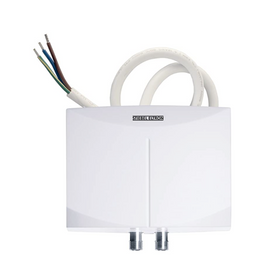
How to Reduce Your Ecological Footprint
Last Updated: Mar 10, 2025If you have kept up with this series, you’ve learned all about ecological footprint calculators. We’ve talked about what an environmental footprint is, different types of environmental footprint calculators, and how to understand your footprint results. There is a lot to unpack and understand when it comes to your environmental impact. Once you know what your ecological footprint is and what it means, it is vital to learn how to reduce it.
It is important to note that it is entirely your decision to reduce your footprint, and this article will outline some ways to do so. And, even if you have a lower ecological footprint than the average American, there’s always room for improvement if you wish to do so. There is not a one-size-fits-all solution. However, this article will provide you with a foundation to explore various ways to reduce your footprint, based on what an ecological footprint measures.
To briefly recap, an ecological footprint has five main components: food, housing, transportation, goods, and services. An environmental footprint calculator focuses on the first four components (food, housing transportation, and products). An individual's 'service' component is dependent on the country where they live. In theory, every resident of a country shares the same “services” footprint, including infrastructure, healthcare, public services, and more.
Next, we’ll outline various ways to reduce your footprint within each component measured by the Global Footprint Network’s (GFN) online ecological footprint calculator.
Table of Contents
- How To Reduce Your "Food" Footprint
- How Can I Reduce My "Housing" Footprint
- How Can I Reduce My “Transportation” Footprint
- How Can I Reduce My Ecological “Goods” Footprint
- Just The Beginning
How To Reduce Your "Food" Footprint
Here’s what the food section of the Global Footprint Network calculator measures:
Consumption of animal-based food products, broken down by the following:
- Beef/lamb
- Pork
- Poultry
- Fish/shellfish
- Eggs, cheese, or dairy
Use of environmentally-responsible food products, broken down by the following:
- Fresh, unpackaged foods
- Locally grown or produced foods
We’ve all heard to “eat less or no meat” in recent months, especially with the significant push for meat-alternatives like the Impossible Burger. In an ideal world, we would all be vegetarians and grow our food. Sounds easy, right? Realistically, it is much easier said than done - especially for those used to a particular diet.
We’ve all heard that beef is the biggest offender, and there’s plenty of evidence to support this. For example, a study by the University of Minnesota conducted a detailed analysis of various foods and agricultural systems to understand their environmental impacts, finding that, of the 90 food types included, beef had the most substantial impact.
There are many resources out there that provide advice on environmentally-friendly diets. Make sure to do your research to understand the impact of what you are consuming, as every diet is different. Do not only consider greenhouse gas emissions, as many resources tend to focus on. In addition to greenhouse gases, there is land use, water consumption, pollution, animal welfare, employee conditions, and more to consider — all of these influence the impact of what we consume.
One popular method for reducing or eliminating meat is a continual reduction. Start by setting a week-by-week plan to reduce your consumption of meat and other animal-based products. Try first to reduce or eliminate the most resource-intensive products (such as beef and pork). Your first week, start by replacing one meal that typically includes meat with alternatives. For example, if you usually cook bacon Saturday mornings, try a less resource-intensive option like turkey bacon or eliminate the meat and substitute with foods like grilled peppers or sauteed spinach. Each subsequent week, focus on another meal to reduce or eliminate your consumption of animal-based products.

Other important things to consider when examining your diet are food waste, packaging, and the transportation footprint (i.e., distance traveled to get to your home). Actively focus on reducing waste - shockingly, between 30-40% of food production is wasted. By carefully planning your weekly meals, you can purchase what you need on your weekly grocery trip. Be sure to take note of expiration dates and use products before they expire.
How Can I Reduce My "Housing" Footprint
The housing section of the GFN’s ecological footprint includes the following:
- Housing type
- Building materials
- Number of occupants in the household
- Size of home
- Existence of electricity (including renewable)
- The energy efficiency of the home
There are many, many ways you can reduce the impact of your home - we won’t have time to cover them all. Many techniques are self-evident, like cutting one’s home size, incorporating energy-efficient appliances, climate controls, and environmentally-responsible building materials.

Reducing home size is one of the most significant ways to reduce your footprint. In 2010, the Oregon Department of Environmental Quality (DEQ) released a study, which found that reducing the square footage of your home is the most effective way to reduce your impact on the environment. In addition, homes that use recycled materials have substantially reduced environmental impacts. If you have much excess, unused space in your home, consider downsizing or renting part of your home.
In the build process, building materials should be a big focus. Many resources will help you learn about building materials that you might be considering. Consider things like material certifications, transportation requirements, recycled content, and reuse. There are even tools to estimate the life cycle of a material.
How Can I Reduce My “Transportation” Footprint
The transportation component includes the following:
- The distance traveled by car, motorcycle, train, or bus
- The fuel efficiency of car or motorcycle
- The frequency of carpooling by car
- The hours of flying each year
First and foremost, it is essential to note that air travel is one of your footprint's leading influencers. Even just a few additional trips each year can drastically raise your entire footprint. To illustrate, I referred to the GFN calculator to see how my footprint could change if I traveled more by plane. By increasing my annual air travel time from 5 hours to 25 hours, my entire ecological footprint increased by one whole global hectare (2.9 gha to 3.9 gha). If you travel a lot for leisure or work, you (or your employee) might consider investing in an airline carbon offset program. Alternatively, you could give thought to taking a vacation within driving distance or attending work meetings virtually.
Other ways to reduce your transportation footprint include: reduce your travel distance, take public transportation, bike, carpool, or purchase a fuel-efficient vehicle.
How Can I Reduce My Ecological “Goods” Footprint
The GFN calculator includes the following in the “Goods” component:
Purchasing habits:
- Clothing, footwear, or sporting goods
- Household appliances
- Electronics and gadgets
- Books, magazines, and newspaper
- Household furnishings
Recycling of:
- Paper
- Plastic
Ways to reduce your ‘goods’ footprint are fairly self-evident. We’ve all heard the 3 R’s of recycling: Reduce, Reuse, Recycle. To go beyond this, consider the 5 R’ instead: Refuse, Reuse, Reuse, Repurpose, Recycle. This approach speaks to first refusing single-use plastics and products with unnecessary packaging. In short, this approach tells us that recycling should be our last resort.
To reduce your footprint in the ‘goods’ area, reducing your purchases among all categories is vital. The less you own, the less waste you produce. The minimalist lifestyle is not only trendy-- it’s an incredibly effective way to reduce your environmental impact. Consider investing in higher quality socks that are responsibly made versus the 12-pack of a synthetic blend. Or consider opting for online-only bills and magazine subscriptions. Evaluate your current buying habits and look for ways to either reduce your purchasing habits or improve these habits by purchasing items with less packaging or more environmentally-responsible materials.
Just The Beginning
This article just scratches the surface of how someone might be able to reduce their ecological footprint as measured by the Global Footprint Network’s online ecological footprint. Of course, there are many ways to reduce your footprint, many of which were not directly addressed here. The key is to evaluate your lifestyle and determine ways in which you can effectively improve. We are fortunate to have so many resources at hand to walk us through these steps. There are online references, apps, blogs, and more that can help you learn more about your impact and effectively reduce it.
It is important to remember that reducing your environmental impact is a process. Sometimes, it can take years to be comfortable with these transitions. Everyone is different, and as such, their journeys to more environmentally-conscious lifestyles are too.
Maria Saxton
Located in Roanoke, Virginia, Maria Saxton holds a Ph.D. in Environmental Design and Planning from Virginia Tech. She works as an Environmental Planner and Housing Researcher for a local firm specializing in Community Planning, Architecture, Landscape Architecture, and Historic Preservation. Her dissertation explored the environmental impacts of small-scale homes. She serves as a volunteer board member for the Tiny Home Industry Association.










